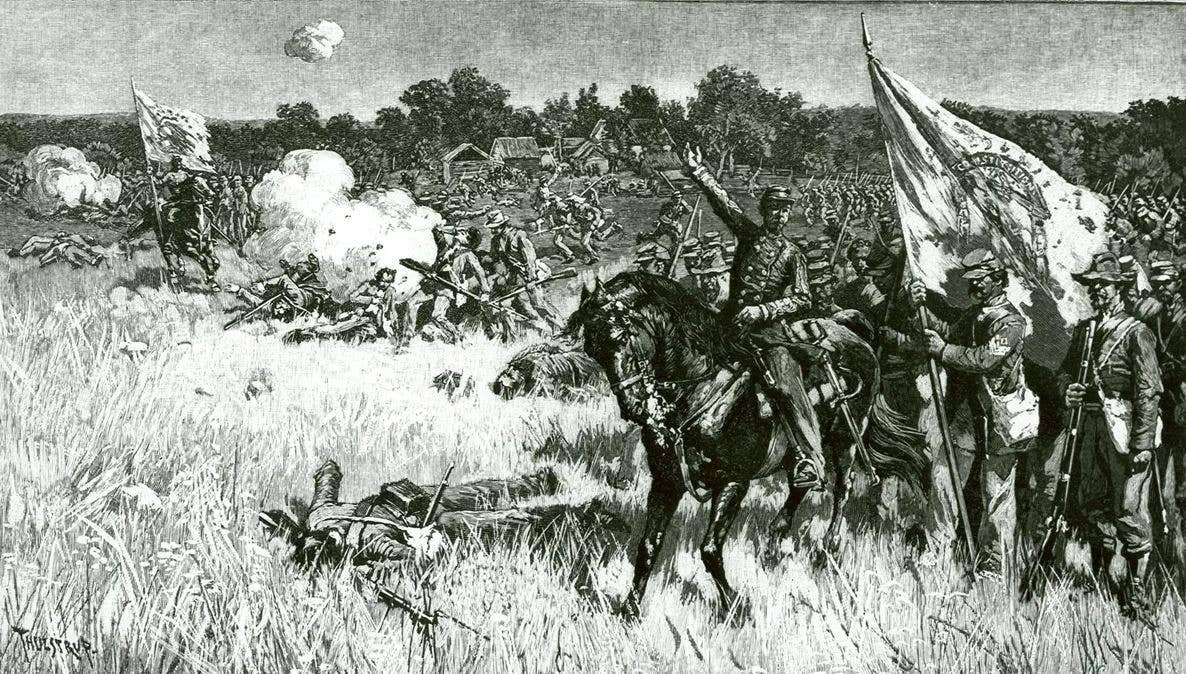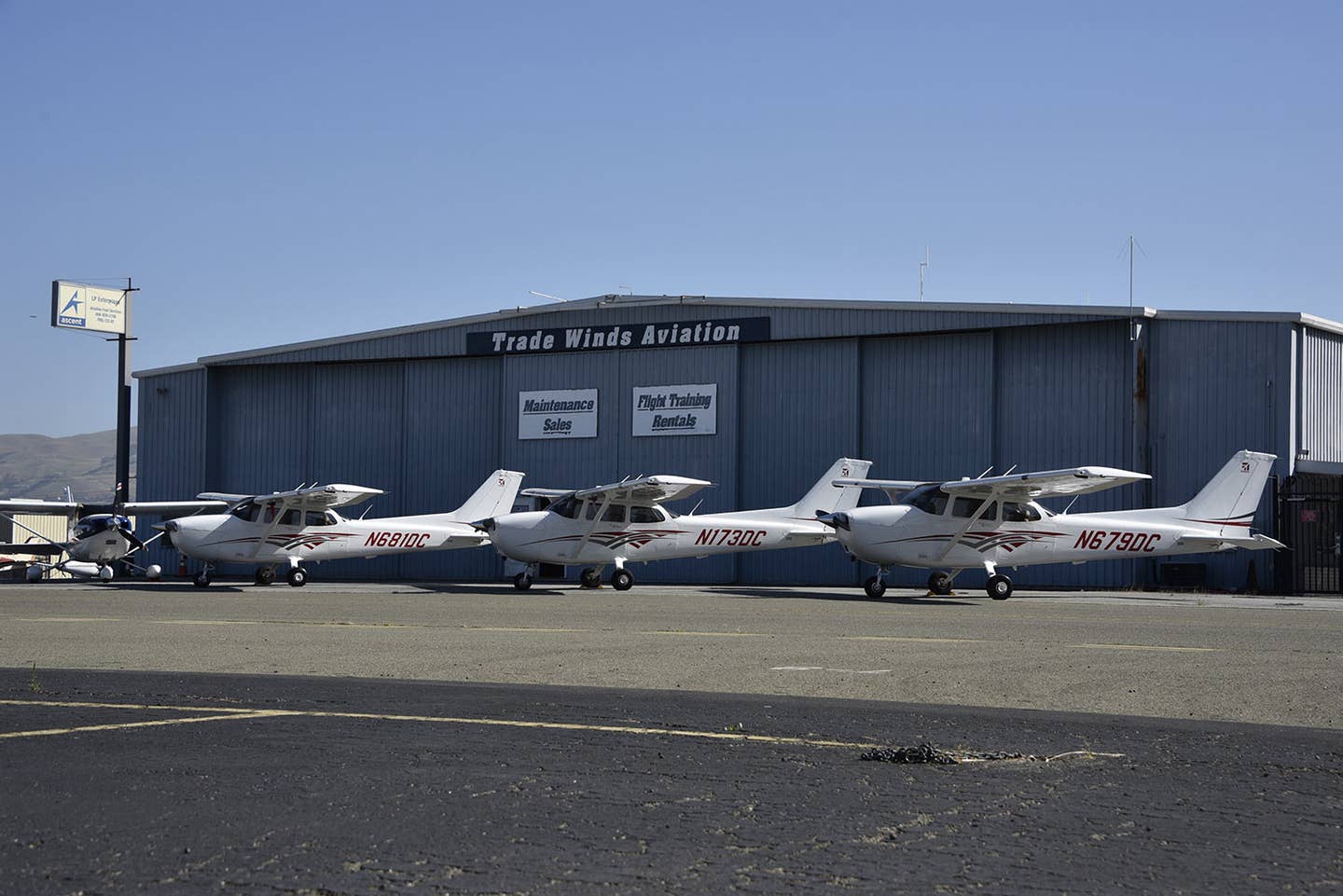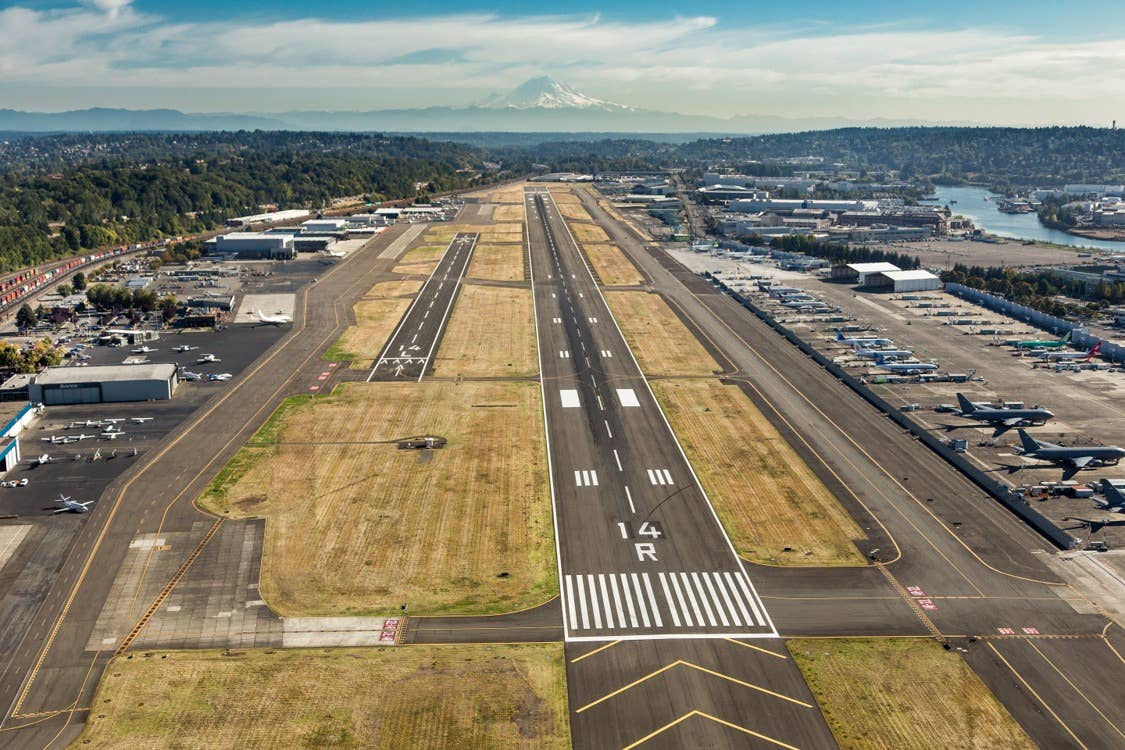Eight Civil War Battlefields That Are Convenient to GA Airports
Spot these historic sites from the air, then land for a closer look.

Rallying the troops of Bee, Bartow, and Evans, behind the Robinson House [Illustration Courtesy: National Park Service]
Visiting a Civil War battlefield can be an enlightening way to come to terms with a vital yet difficult chapter in U.S. history. Guided tours reveal fascinating details about the characters, politics, tactics, and technology involved in the battles. However, a quiet, solitary walk across the fields can be just as affecting.
A lucky fact for aviators is that many of the battles took place in rural regions that made ideal sites for airports in the following century. Often you can find a runway within walking distance of where furious fighting once took place, and history unfolded. Plan your trips carefully to comply with airspace rules, minimum flyover altitudes for National Park Service sites.
The following are just a few of the airport/battlefield combinations that we recommend. If you have favorites not mentioned here, please tell us about them.
Manassas Regional Airport-Harry P. Davis Field (KHEF)
First and Second Battles of Bull Run, Manassas, Virginia
While the Civil War officially began with the Confederate shelling of Fort Sumter in Charleston Harbor on April 12, 1861, one could argue the First Battle of Bull Run kicked off the serious fighting. Also known as the Battle of First Manassas, it took place on July 21, 1861. Union General Irvin McDowell’s army was supposed to capture Richmond, the Confederate capital, and end the war quickly. Spectators even brought picnics to the field and viewed the battle as entertainment. But fierce combat and defeat for McDowell hinted at a long war to come. Confederates took another victory in a second clash at Bull Run on August 29, 1862. The battlefield is about eight miles from the airport, where rental cars are available.
Hagerstown Regional Airport-Richard A. Henson Field (KHGR)
Battle of Antietam, Sharpsburg, Maryland
Known as the bloodiest day in American history, the September 17, 1862, clash ended with nearly 23,000 soldiers dead, wounded, or missing. While often considered a tactical draw, the battle pushed General Lee’s Army of Northern Virginia back across the Potomac River, ending its first invasion into the North. President Abraham Lincoln considered it a victory, which he used as part of a backdrop for issuing the Emancipation Proclamation. You’ll need a car to travel the 15 miles or so from airport to battlefield, but the experience is well worth the effort, and Rider Jet Center, the FBO on the field, is happy to help with arrangements.
Savannah-Hardin County Airport (KSNH)
Battle of Shiloh, Shiloh, Tennessee
Almost 110,000 Union and Confederate troops clashed during this first major battle in what was known as the Western Theater of the Civil War. The result was 23,746 casualties, more than in all of America’s previous wars combined, according to the National Park Service. Union forces prevailed, essentially marking the end of the Confederates’ perceived advantage in the West. The loss of General Albert Sidney Johnston in battle was also a blow to the morale of the Southern forces.
Coastal Carolina Regional Airport (KEWN)
Battle of New Bern, New Bern, North Carolina
New Bern was a strategic target for the Union Army, in part, because the Atlantic and North Carolina Railroad was there, presenting an opportunity to cut a main Confederate supply line, according to the New Bern Historical Society. The battle is known as the baptism of fire for the 26th North Carolina, the unit which later lost a staggering 588 of 800 men at the battle of Gettysburg. It’s a short trip—about two miles—between the airport and the battlefield.
Gettysburg Regional Airport (W05)
Battle of Gettysburg, Gettysburg, Pennsylvania
You can walk the two miles from the airport to the battlefield visitor center if you like. But even on approach to the runway, passing over rolling, rural farmland, one can imagine how the area must have looked in the summer of 1863. The three-day battle, which resulted in a staggering 50,000 casualties and a Union victory, was the turning point of the war. Critics of Union General George G. Meade said the war would have ended sooner had he pursued the retreating Confederate leader General Robert E. Lee.
Shannon Airport (KEZF)
Battle of Fredericksburg, Fredericksburg, Virginia
Combat during this five-day engagement in December 1862 was spread out. There was fighting in open fields and in the town’s streets and homes—some of the first urban warfare of the Civil War. The battlefield visitor center is about three miles from the airport, but Slaughter Pen Farm, where some of the fiercest fighting took place, is next to the main runway.
Cobb County International Airport-McCollum Field (KRYY)
Battle of Kennesaw Mountain, Kennesaw, Georgia
Confederate trenches from the June, 27 1864, battle are still visible on top of Kennesaw Mountain, as are rifle pits dug by Union soldiers. The engagement was part of the Union’s Atlanta Campaign under General William T. Sherman, who planned to wipe out the Army of Tennessee under General Joseph E. Johnston in the process of moving through Kennesaw. He failed and lost the battle. However, the Confederates were not able to stop his march to Atlanta. The battlefield is about five miles from the airport.
Richmond International Airport (KRIC)
Battle of Seven Pines, Sandston, Virginia
In this case, the airport was built on top of the battlefield. A series of earthworks encircled Richmond during the Civil War, manned by infantry and artillery units defending the city from Union attack. Seven Pines stands out for an early example of aviation used in battle. Balloonist Thaddeus Lowe, who headed the Union Army Balloon Corps, ascended above the battlefield to look for potential weakness in the Confederate lines of defense. Today, signs and cannons around the airport mark the earthworks’ remains. Some are easy to spot.

Sign-up for newsletters & special offers!
Get the latest FLYING stories & special offers delivered directly to your inbox






